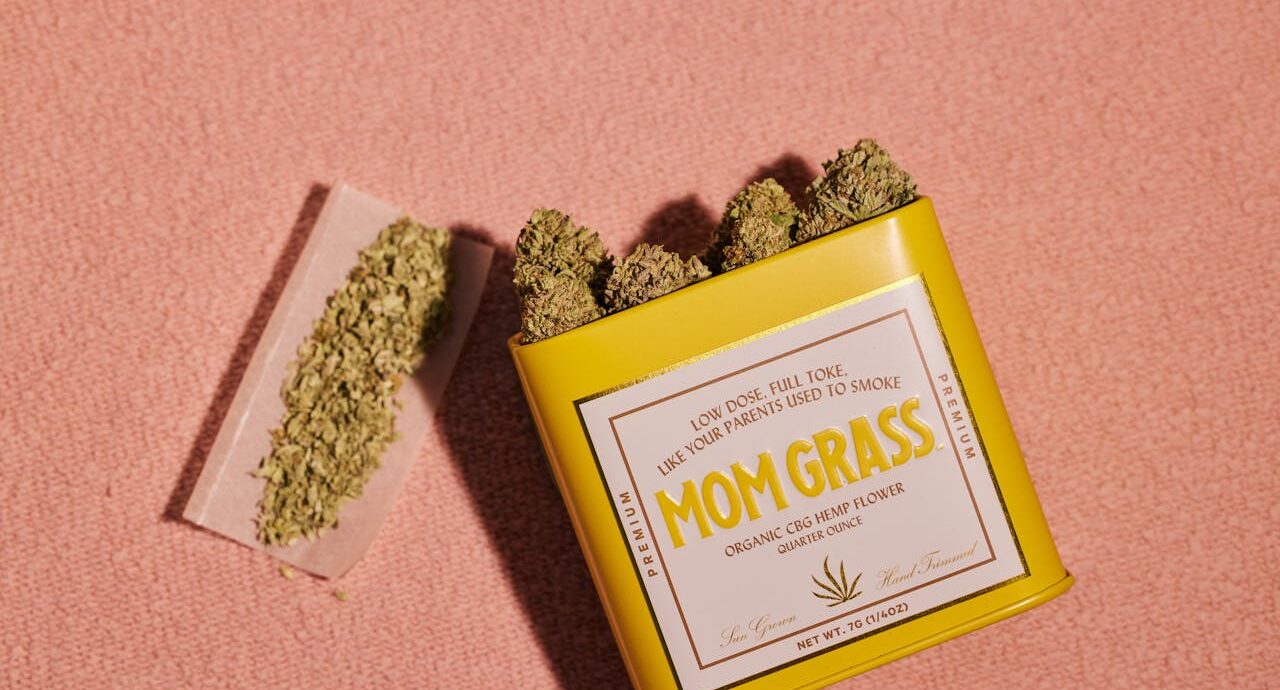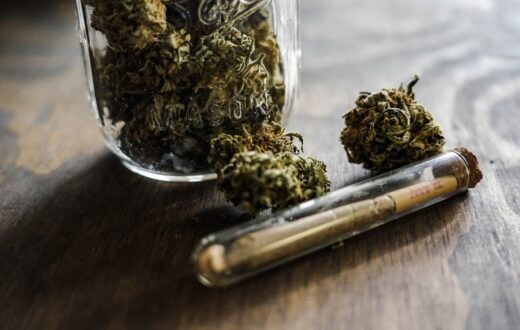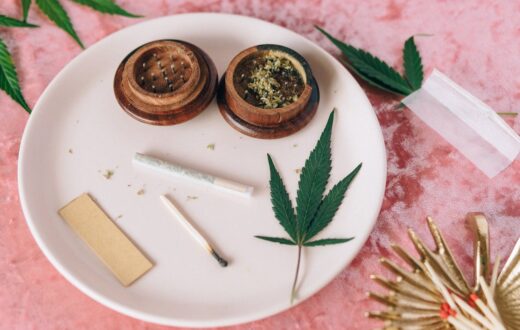Introduction to Super Kush CBD 125
The Super Kush CBD 125 strain stands out in the realm of cannabis cultivation due to its impressive cannabinoid profile and unique characteristics. Originating from a careful crossbreeding of high-CBD strains, Super Kush CBD 125 has been specifically developed to meet the growing demand for medicinal cannabis. This strain boasts a remarkable balance of cannabinoids, with CBD content often reaching around 15-20%, making it an appealing choice for both medicinal users and growers seeking to cultivate plants with significant therapeutic potential.
Genetically, Super Kush CBD 125 is derived from a combination of Kush genetics, known for their robust nature and resilience. The strain is characterized by its dense, resinous buds that are often coated in a frosty layer of trichomes, giving it an aesthetically pleasing appearance. Growers will appreciate its adaptability to various cultivation methods, whether grown indoors or outdoors. Additionally, the plants exhibit a relatively short flowering time, typically around 8-9 weeks, allowing for multiple harvests within a single growing season.
One of the key attributes of Super Kush CBD 125 is its potential medicinal benefits. High CBD content means that this strain is often sought after for its therapeutic properties, including pain relief, anxiety reduction, and anti-inflammatory effects. This makes it particularly appealing for those looking to explore the benefits of CBD-rich cannabis without the psychoactive effects that are commonly associated with THC-dominant strains. Consequently, Super Kush CBD 125 has gained popularity among medicinal cannabis users who value its non-intoxicating nature while still offering substantial therapeutic effects.
Understanding CBD vs. THC: The Key Differences
Cannabis is a complex plant characterized by various compounds known as cannabinoids, with two of the most prominent being cannabidiol (CBD) and tetrahydrocannabinol (THC). These compounds play distinct roles in the effects and benefits associated with cannabis use. THC is primarily known for its psychoactive properties, which can alter a person’s mental state and produce the “high” often associated with recreational cannabis use. In contrast, CBD is non-psychoactive, meaning it does not produce such euphoric effects and is often sought after for its therapeutic benefits.
CBD is celebrated for its potential to alleviate a variety of health conditions, including anxiety, depression, and certain types of chronic pain. Many individuals gravitate towards strains rich in CBD, such as Super Kush CBD 125, for its ability to provide relief without the intoxicating effects attributed to THC. This characteristic makes CBD an appealing option for those seeking therapeutic relief while maintaining cognitive clarity and functionality throughout their daily activities.
From a regulatory standpoint, the legal landscape surrounding CBD is significantly different from that of THC. In numerous jurisdictions, CBD derived from hemp (defined as cannabis containing less than 0.3% THC) is legal, facilitating wider accessibility for both consumers and growers interested in cultivating high-CBD strains. This presents an advantageous opportunity for growers focusing on high-yield strains like Super Kush CBD 125, which meets both demand and legal requirements for CBD-rich cannabis. Understanding these differences empowers growers to make informed decisions about their cultivation practices, ultimately enhancing their potential yields and product offerings.
Setting Up Your Growing Environment
Creating an optimal growing environment is crucial for successfully cultivating Super Kush CBD 125. This strain thrives under specific conditions, which you must meticulously control to achieve maximum yield and potency. One of the primary considerations is the choice between indoor and outdoor cultivation. Indoor growth offers the advantage of controlled conditions, shielding your plants from pests and unpredictable weather. Conversely, outdoor growing allows for natural sunlight, which can enhance the flavor profile and growth rate of Super Kush CBD 125.
When opting for indoor cultivation, lighting is a pivotal factor to consider. LED lights are favored among many growers due to their energy efficiency and ability to produce the full light spectrum required for plant photosynthesis. During the vegetative phase, Super Kush CBD 125 requires approximately 18 hours of light daily, while a 12/12 light cycle is recommended for the flowering stage to induce bud growth. It is vital to monitor and adjust the intensity of your grow lights to mirror outdoor conditions as closely as possible.
Temperature and humidity are another important aspect to manage in your growing environment. Super Kush CBD 125 flourishes best in temperatures ranging from 68°F to 77°F (20°C to 25°C) during the day, while nighttime temperatures should ideally be slightly lower. Maintaining humidity levels between 40-60% is essential in the vegetative stage but should be reduced to 40-50% during flowering to prevent mold and mildew.
Additionally, good ventilation plays an integral role in promoting healthy growth for Super Kush CBD 125. Proper air circulation ensures that plants receive adequate CO2 for photosynthesis and helps to regulate temperature and humidity levels. Implementing exhaust fans and air filters can significantly improve the air quality in your grow space, ultimately leading to healthier plants and increased yields.
Choosing the Right Soil and Nutrients
When attempting to grow Super Kush CBD 125, the foundation of a successful cultivation experience lies in selecting the appropriate soil and nutrient mix. Soil serves not only as a medium for root development but also plays a crucial role in providing the necessary minerals and organic matter for optimal plant growth. For Super Kush, a well-aerated, slightly acidic soil with a pH range of 6.0 to 7.0 is recommended. Soils rich in organic matter, such as compost or peat moss, can significantly benefit the overall health of your plants and enhance CBD production.
In addition to soil selection, understanding the nutrient needs of Super Kush CBD 125 is vital. Cannabis plants require a balanced mix of macronutrients, including nitrogen, phosphorus, and potassium, as well as various micronutrients such as calcium, magnesium, and iron. Growers may choose between organic and synthetic fertilizers, each offering distinct advantages. Organic fertilizers, derived from natural sources, promote beneficial microbial activity in the soil, fostering a healthier root environment. On the other hand, synthetic fertilizers allow for precise control over nutrient delivery but may alter soil health over time if not used judiciously.
When it comes to nutrient application, timing is crucial. During the vegetative stage, an emphasis on nitrogen is essential for leaf growth, while the flowering stage requires an increased focus on phosphorus and potassium to support bud development. Regularly testing soil pH and nutrient levels ensures that your Super Kush CBD 125 receives an optimal nutrient profile throughout its growth cycle. Additionally, incorporating micronutrients into your feeding regimen will support vital functions such as photosynthesis and enzyme activity, ultimately leading to improved yield and potency. By paying attention to both soil quality and nutrient management, cultivators can significantly enhance their ability to grow Super Kush CBD 125 successfully.
Germination and Planting Techniques
Effective germination of Super Kush CBD 125 seeds is critical for achieving a successful crop. The first step is to ensure that the seeds are fresh and of high quality, as this significantly affects the germination success rate. Start by soaking the seeds in distilled water for 24 hours to initiate the germination process. This allows the seed coat to soften and increases the likelihood of a successful sprout.
After soaking, the next step involves placing the seeds in a damp paper towel. Fold the towel over the seeds and place it in a warm, dark location, maintaining a temperature of around 70-80°F (21-27°C). This environment mimics the natural conditions suitable for germination, and within a few days, you should begin to see the seeds sprout. Keep the paper towel moist, but not overly wet to prevent mold growth.
Once the seeds have sprouted roots about half an inch long, it is time to transplant them into the growing medium. Choose a well-draining soil mix that is rich in organic matter. When transplanting the seedlings, ensure that the planting depth is appropriate; typically, this should be about a quarter to half an inch deep. This depth ensures that the tiny seedlings can efficiently break through the soil surface and access sunlight.
Timing is also crucial for the successful establishment of Super Kush CBD 125 plants. Ideally, seeds should be germinated in the spring as temperatures are warmer, which can help promote healthy growth. Remember to plant the seedlings in pots with enough space to accommodate their root development. Adhering to these germination and planting techniques will set a solid foundation for your Super Kush CBD 125 crop, ensuring a higher yield and overall success in your cultivation efforts.
Cultivation Timeline: From Seed to Harvest
When embarking on a journey to cultivate Super Kush CBD 125, understanding the cultivation timeline is crucial for achieving the best results. This high-yield cannabis strain requires careful attention to various growth stages, including seed germination, vegetative growth, flowering, and finally, harvesting. Each stage plays a vital role in the potential potency and yield of the plant.
The growth journey begins with seed germination, which typically lasts between 1 to 7 days. During this period, providing optimal moisture and temperature is essential to encouraging strong seedling development. After germination, the plant enters the vegetative phase, which can last anywhere from 4 to 8 weeks. During this time, Super Kush CBD 125 focuses on growth and proliferation of foliage. Ensuring adequate light, nutrients, and water will promote a robust root system and healthy plant structure. Pruning at this stage can also enhance light penetration and air circulation, ultimately leading to a higher yield.
Following the vegetative phase, the flowering stage commences, lasting approximately 8 to 12 weeks. During flowering, the focus shifts to bud development. Proper attention must be given to light cycles, as this stage requires a consistent 12 hours of light and 12 hours of darkness to induce flowering. Environmental factors such as humidity and temperature should be carefully monitored to avoid issues like mold or pests, which can diminish the quality of your harvest.
Finally, the harvesting stage, which occurs when the trichomes turn milky with a hint of amber, typically marks the completion of the growth cycle for Super Kush CBD 125. The harvest period can vary but is generally optimal around week 10 of flowering. Early morning or late evening is typically the best time for harvesting to ensure maximum potency and flavor. A successful cultivation timeline not only maximizes yield but also enhances the overall quality of the cannabis produced.
Pest and Disease Management
Effective pest and disease management is crucial for ensuring the health and yield of Super Kush CBD 125 plants. As a grower, being able to identify common threats and implementing preventative measures will significantly enhance the overall quality of your crop. The most common pests affecting Cannabis plants, including Super Kush CBD 125, are aphids, spider mites, and thrips. These pests can cause damage by feeding on the plant’s sap and transmitting diseases.
One of the best approaches to managing these pests is through integrated pest management (IPM). This strategy combines multiple techniques, including biological control, cultural practices, and targeted chemical applications. For instance, introducing beneficial insects such as ladybugs or predatory mites can effectively reduce pest populations. Keeping the growing environment clean and free from debris also minimizes the risk of infestations.
In addition to pests, diseases like powdery mildew and root rot can severely hinder the growth of Super Kush CBD 125. Preventing these diseases begins with proper airflow and humidity control. Ensure that your plants have adequate spacing to promote better air circulation and reduce moisture buildup. Regularly inspecting plants for early signs of disease can also facilitate quick preventative treatment, thus maintaining the health of the crop.
When it comes to addressing outbreaks, organic fungicides and insecticides are recommended to minimize chemical exposure. Products containing neem oil or diatomaceous earth can disrupt the life cycle of pests without putting your plants at risk. By employing these organic methods and remaining vigilant, growers can sustain a healthy ecosystem for their Super Kush CBD 125 plants, ultimately enhancing yield and quality.
Harvesting and Curing Your Crop
Harvesting is a crucial phase in the cultivation of Super Kush CBD 125, as the timing of this process significantly impacts the potency and quality of the final product. To determine the appropriate time for harvesting, growers should closely monitor the trichomes on the buds. Trichomes are tiny, glandular structures that produce cannabinoids and terpenes, and their appearance changes as the plants mature. When the trichomes appear milky white with some turning amber, it is typically an indication that your crop is ready for harvesting. This timing ensures the maximization of CBD content while enhancing the overall flavor profile.
Once you have assessed that it is the optimal time to harvest Super Kush CBD 125, the next step involves cutting the plants at the base and hanging them upside down in a dark, temperature-controlled space with good air circulation. This technique allows for even drying and helps preserve the essential properties of the buds. The ideal environment for drying should maintain temperatures between 60°F to 70°F (15°C to 21°C) with humidity levels around 50-60%.
After the initial drying process, which can take about 7 to 14 days, the buds must be carefully trimmed to remove excess leaves. Proper trimming enhances the appearance and allows for more effective curing. Following trimming, the curing process begins, which can dramatically improve the flavor and aroma of your Super Kush CBD 125. For curing, place the trimmed buds in airtight containers, such as glass jars, and store them in a cool, dark area. Open the jars once or twice daily for the first week to release moisture and allow fresh air in, a process known as “burping.” Continue to cure for at least two to four weeks, as this time intensifies the flavors and overall quality of your final product.
In conclusion, proper harvesting and curing techniques for Super Kush CBD 125 are instrumental in producing high-quality cannabis. By following the outlined steps, growers can significantly enhance the potency and overall experience of their cultivated crop.
Conclusion and Future of Super Kush CBD 125 Cultivation
In this comprehensive guide, we have explored various aspects of growing Super Kush CBD 125, a remarkable strain recognized for its impressive cannabinoid profile and therapeutic benefits. Throughout the article, we highlighted essential practices such as optimal growing conditions, nutrient management, and pest control strategies designed to maximize yields while ensuring high-quality cannabis production. The cultivation of Super Kush CBD 125 not only promises high yields but also offers a unique appeal to both medical and recreational users seeking the therapeutic advantages of CBD.
One of the most significant advantages of growing Super Kush CBD 125 is its versatility. This strain is particularly resilient, making it suitable for various growing environments, whether indoors or outdoors. Its adaptability contributes to the emerging trends in cannabis cultivation, especially as more growers seek high-CBD strains that allow for increased market differentiation. Furthermore, as the demand for medicinal cannabis continues to rise, the cultivation of strains like Super Kush CBD 125 is expected to grow in popularity, positioning growers to meet consumer needs effectively.
As we look to the future of cannabis cultivation, it is evident that sustainability practices will assume a pivotal role. Growers are increasingly focusing on organic farming methods, water conservation, and biodiversity to enhance their cultivation practices while ensuring the environmental impact remains minimal. Super Kush CBD 125’s ability to thrive under organic conditions aligns perfectly with these emerging trends, suggesting that it may become a preferred choice among environmentally conscious cultivators.
Ultimately, the future of Super Kush CBD 125 cultivation appears bright, with ample opportunities for innovative growers. Emphasizing quality and sustainability will not only meet the current market demands but also pave the way for responsible cannabis production in the years to come. The cultivation of this premium CBD strain can serve as a profitable and sustainable venture for growers looking to leave their mark in the cannabis industry.












